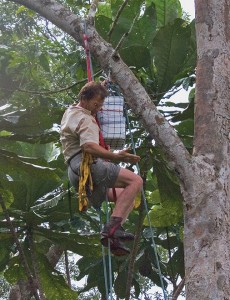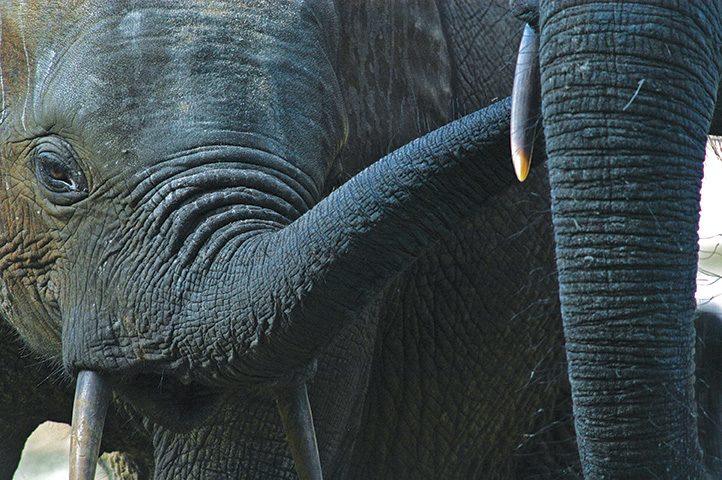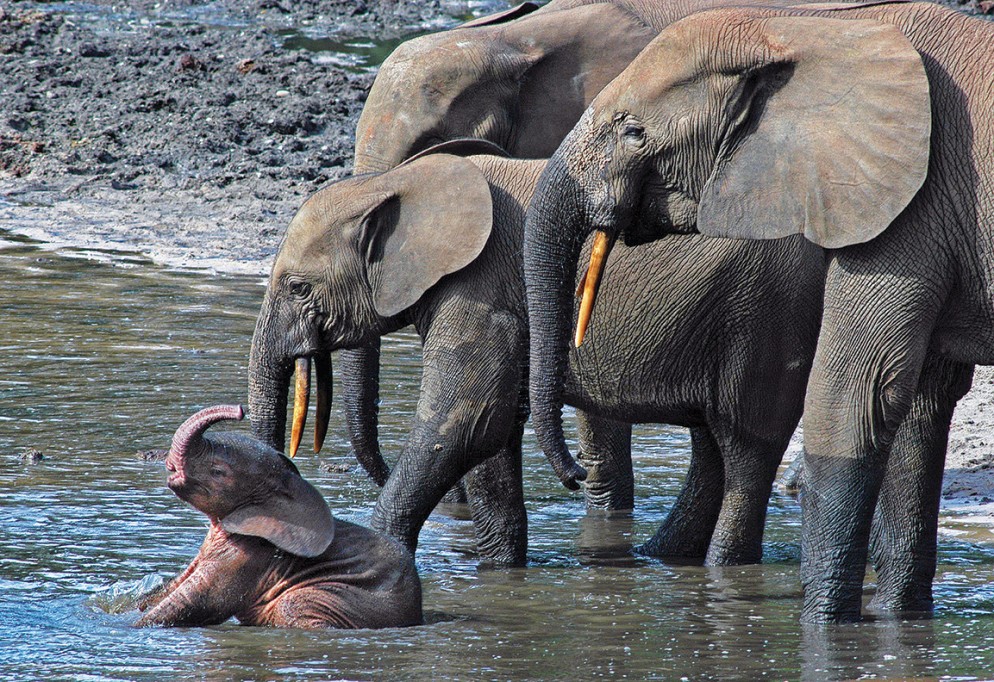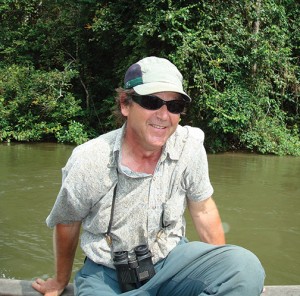Working to Save Jungle Giants
When a wild elephant decides it’s going to chase you, Peter Wrege ’73 said, it’s important to “drop your pack” and “run.”
Of course, not many will encounter an elephant in the wild, but good advice is good advice.
And Wrege knows what he’s talking about, although it’s been quite a trek from his days as a Colorado College student studying captive breeding of peregrine falcons to his position these days as director of the Elephant Listening Project at Cornell University in Ithaca, New York.
He laughed about the length of his journey between birds and elephants.
But it is important because, as he said, the peregrine project with James Enderson, now Colorado College professor emeritus of biology, turned out to be key in his decision to head to Cornell for graduate work.
Peregrine Fund founder Tom Cade was at Cornell University and the reintroduction program was just getting started. “He was interested because I had been comparing the behavior of wild peregrines with captive ones and had some ideas about how we could improve the success in the captive situation,” Wrege said.
During his seven-year Ph.D. program (in Florida focusing on wading birds) he met his doctoral professor Steve Emlen, who was working on social behavior and mating systems in birds. The year Wrege completed his Ph.D., Emlen was looking for someone to run a project in Kenya. Wrege signed on and began a 20-year collaboration with Emlen, both in Kenya and Panama.
Unbeknownst to him, Africa would continue to play a major role in his life.
He was teaching an undergraduate course on the biology of the American tropics in 2007 when he ran into Katy Payne, who founded the Elephant Listening Project in 1999. She was interviewing candidates to take over her job running ELP and said, “You should be applying for this job.”
Even though he didn’t know much about elephants, he was intrigued.
 “One of the really key motivations for me, besides elephants just being very interesting animals, was [all] of my previous work. All of it had been very basic science kinds of research, not conservation-oriented, even though I had always been very interested in conservation. As a getting-toward-an-end-of-career trajectory, it was really motivating to me to work on a species where conservation was a top part of the job, and it seemed like a nice way to round out a lifetime of research.”
“One of the really key motivations for me, besides elephants just being very interesting animals, was [all] of my previous work. All of it had been very basic science kinds of research, not conservation-oriented, even though I had always been very interested in conservation. As a getting-toward-an-end-of-career trajectory, it was really motivating to me to work on a species where conservation was a top part of the job, and it seemed like a nice way to round out a lifetime of research.”
So he applied — and got the job.
Now, seven years and 500,000 hours of audio recordings later, his stories reveal that Wrege has become enamored with the great beast and that he’ll do everything he can to save the African forest elephant.
One of three species of elephant, the forest elephant is “the one species of elephant that has the best chance of sort of staying wild,” Wrege said. Although they’re very large animals, they’re difficult to see within their natural tropical rainforest habitat.
ELP eavesdrops on them by placing recorders high in trees to monitor the animals’ low-frequency vocal sounds for three or more months at a time.
One of the key benefits to acoustic recording, Wrege said, is that there isn’t any human bias in the data that are collected, and no human influence on the animals’ behavior.
And the downside?
“I’ve been going three or four times a year for about six weeks each time, so in the end it’s almost half a year in the field. But almost all of that is hiking through the forest and putting recorders up, and collecting data and changing batteries and walking out again.
 “For a behavioral ecologist, it’s a bit frustrating because I actually don’t sit and watch elephants all that often.”
“For a behavioral ecologist, it’s a bit frustrating because I actually don’t sit and watch elephants all that often.”
However, by monitoring the elephants’ communication, ELP can figure out what kinds of behaviors or interactions might be occurring.
“There are many, many questions that would be interesting to ask of forest elephant ecology and behavior,” Wrege said, “but my focus has really been very much on practical applications of acoustic recording for their conservation.”
Such as increasing anti-poaching efforts.
Even though the dense rainforest allows elephants to move around as they always have and helps keep their social system intact, Wrege said it also is ripe for hiding ivory poachers. Government officials in the areas ELP currently works in — Gabon, Cameroon, Central African Republic, and northern Republic of Congo — can’t easily use vehicles or planes to monitor forest elephants as can be done with the savannah elephants of eastern and southern Africa. There’s almost no way to determine if you’re in a national park in Central Africa.
“Estimates we have at the moment, with the amount of ivory seizures going on, are that we may be losing 10 percent of the population a year,” Wrege said. “And the most recent estimate was about 100,000 forest elephants left, so that means we’ve got a real problem.”
That problem can be identified very clearly, because of one particular sound that can be heard in the recordings of elephant communication — gunshots.
“A big project I’m involved in now in Cameroon involves having quite a lot of sensors in a national park where we’re recording gun hunting as well as elephant activity,” Wrege said. “The idea is to specifically work with the conservator and use the hunting data from the acoustics to change how the patrols operate. Increase … the number of guys involved or the frequency of use, etc., and then see whether we can actually measure an effect of that change.”
He said their recordings in that park, approximately 15 months’ worth, include about 4,000 gunshots. He estimates that a gunshot can be heard nearly every day, in every place they’ve placed recorders. It’s frustrating, too, Wrege said, because he knows, whether that shot was for an elephant or another forest animal, by the time he’s hearing it, it’s too late to do anything.
ELP is working on finding different kinds of automated detectors that will allow them to use high-performance computers to churn through the data more quickly. Wrege also has been training locals in Gabon and Cameroon to do some of the work ELP does to reduce the time lag between gathering data and getting it to someone who can use it.
Ideally, ELP could use real-time audio detection equipment, where “basically you get the unit out in the forest and then it transmits the data.
“The engineering and the stuff to do this is there,” he said, “but in rainforest habitats where there’s no sun, you have power problems, and there are no cell towers in most of these places … but we’re working on all of those a bit.”
The rainforest may present multiple challenges but the fact is, the elephants that call it home are still living an unconstrained life.
“Ideally, it would be nice to see them remain so,” Wrege said.

